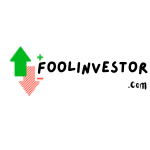Building an affiliate website can be a lucrative venture, allowing you to earn passive income by promoting products or services and earning commissions. In this comprehensive guide, we will walk you through the process of creating an affiliate website using the Blogger platform, leveraging Amazon’s affiliate program, harnessing the power of AI-generated content, exploring niche selection, and maximizing ad monetization strategies.
Steps to Create a Affiliate Website –
1: Choosing a Niche: Selecting the right niche is crucial for your affiliate website’s success. Focus on a specific industry or area of interest that has a target audience and potential for affiliate marketing. Research popular niches, consider your own expertise and passion, and evaluate the competition to find a niche that strikes a balance between profitability and personal interest.
2: Choose a Brand Name and get Domain – After selecting your niche choose a name for your brand and search for its Domain availability. Make sure you get your domain as soon as possible.
3: Setting Up Your Blogger Website: Blogger is a user-friendly platform that simplifies the website creation process. Follow these steps to set up your affiliate website:
- Create a Google account or sign in if you already have one.
- Visit blogger.com and click on “Create Your Blog.”
- Choose a relevant blog name and address.
- Select an appealing template and customize it to suit your brand and niche.
- Create essential pages such as the About page, Contact page, and Privacy Policy page.
4: Joining Amazon’s Affiliate Program: Amazon Associates is one of the most popular affiliate programs, offering a wide range of products and competitive commission rates. Follow these steps to become an Amazon affiliate:
- Visit affiliate-program.amazon.com and sign in with your Amazon account.
- Complete the application process, providing necessary details about your website and how you plan to promote Amazon products.
- Upon approval, access your unique affiliate links and banners to start promoting products.
5: AI-Generated Content: Leverage the power of artificial intelligence to generate high-quality content for your affiliate website. AI tools can help you create product reviews, comparison articles, and informative blog posts. Research reputable AI content generation platforms and utilize them to enhance your website’s content, ensuring it is relevant, engaging, and well-optimized for search engines.
6: Creating Compelling Affiliate Content: Develop valuable content that attracts and engages your target audience. Write informative product reviews, how-to guides, and listicles related to your niche. Focus on providing useful information, highlighting the benefits of the products or services you promote, and incorporating your affiliate links strategically.
7: Implementing Ad Monetization Strategies: Monetize your website further by incorporating display ads. Consider joining ad networks such as Google AdSense or Media.net. These platforms automatically display relevant ads on your website, and you earn revenue when visitors click on or interact with the ads. Ensure that ad placements are strategic, visually appealing, and do not overwhelm your site’s overall user experience.
8: Driving Traffic to Your Website: To maximize your affiliate earnings, it’s crucial to drive targeted traffic to your website. Implement effective digital marketing strategies such as search engine optimization (SEO), social media marketing, email marketing, and content promotion. Create engaging social media profiles, optimize your content for search engines, and leverage email newsletters to build a loyal audience.
9: Tracking Performance and Optimizing: Regularly monitor and analyze your website’s performance using tools like Google Analytics. Track the performance of your affiliate links, content engagement, and conversion rates. Identify what is working well and optimize underperforming aspects of your website to enhance user experience and increase conversions.
Bottom Line –
Building an affiliate website is a dynamic process that requires dedication, research, and continuous optimization. By following this comprehensive guide, you can create a successful affiliate website using the Blogger platform, leverage Amazon’s affiliate program, utilize AI-generated content, select a profitable niche, implement ad monetization strategies, and drive targeted traffic to generate passive income. Remember to stay updated on industry trends and consistently refine your strategies to stay ahead in the competitive world of affiliate marketing.



One Response